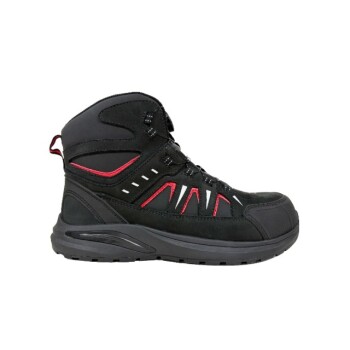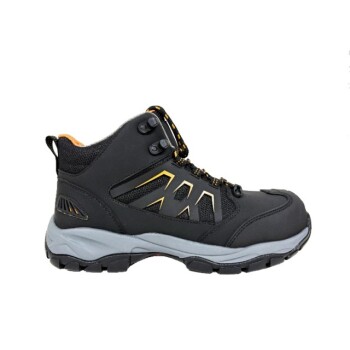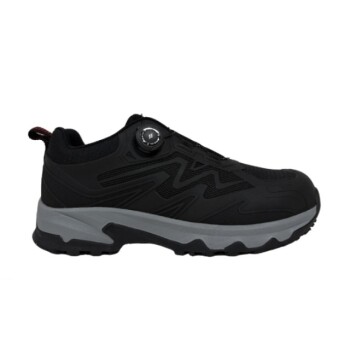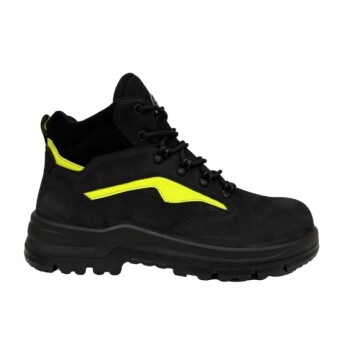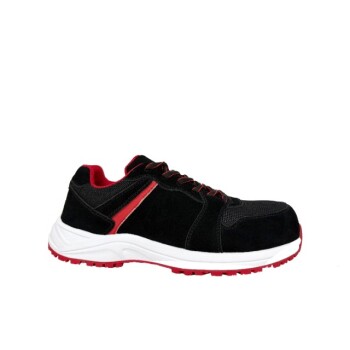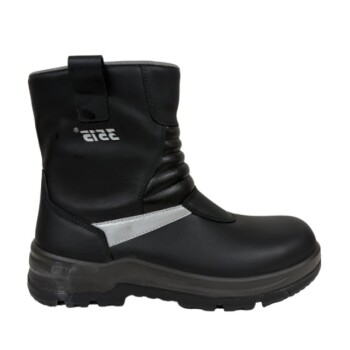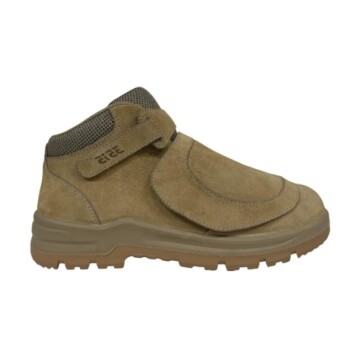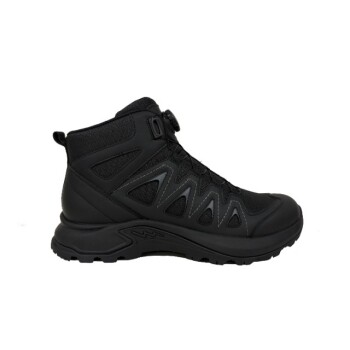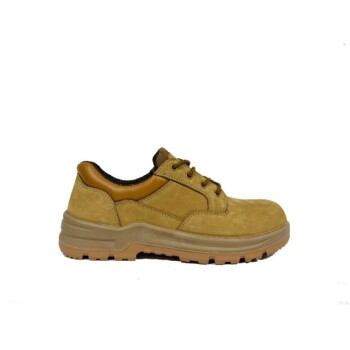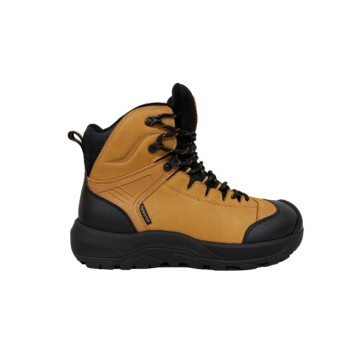The primary benefit of rotating two pairs of safety shoes is to allow each pair a full 24 hours to dry completely. This simple habit prevents the rapid deterioration caused by trapped moisture from sweat, directly extending the life of your footwear and significantly improving your foot health and comfort.
The core principle is moisture management. By allowing your safety shoes to fully dry, you combat material breakdown, prevent the growth of fungus and bacteria, and ensure the structural integrity of the shoe, ultimately protecting both your investment and your well-being.
The Hidden Enemy: Trapped Moisture
Safety shoes are built with durable, often non-porous materials for protection. A side effect of this construction is that they trap a significant amount of heat and moisture from your feet throughout a long workday.
The Impact on Your Shoes
Constant exposure to the salts and acids in sweat breaks down the core materials of your footwear. Glues can weaken, leather can become stiff and crack, and cushioning foams lose their supportive structure. This internal deterioration is the primary cause of premature failure.
The Impact on Your Feet
A damp internal environment is the perfect breeding ground for fungus and bacteria, leading to conditions like Athlete's foot and persistent odor. Furthermore, moist skin is far more susceptible to friction, which is a direct cause of painful blisters and discomfort.
The Benefits of a Dry-Out Cycle
Giving your shoes a full day to rest and air out between wears is the most effective way to counteract the damage caused by moisture.
Extending Shoe Lifespan
When a shoe dries completely, its materials return to their original state. The cushioning foam can decompress, the leather can breathe, and the structural components can rest. This cycle dramatically slows the rate of wear and tear, often doubling the effective lifespan of both pairs.
Promoting Foot Health
A dry shoe is a hygienic shoe. By preventing a constantly damp environment, you eliminate the conditions necessary for fungus and odor-causing bacteria to thrive. This is one of the most effective strategies for maintaining foot health in a demanding job.
Ensuring All-Day Comfort
Putting your foot into a dry, fresh shoe each morning provides a foundation of comfort for the day ahead. It prevents the immediate clammy feeling of a still-damp boot and reduces the likelihood of friction and blisters as the day wears on.
Common Pitfalls to Avoid
Simply owning two pairs of shoes isn't enough. To get the full benefit, you must manage the rotation process correctly.
Insufficient Drying Time
The most common mistake is not giving shoes enough time to dry. A few hours overnight is often insufficient, especially in humid climates or for those who sweat heavily. A full 24-hour rest period is the gold standard for complete moisture evaporation.
Improper Storage
Tossing your resting pair into a closed locker or a gym bag traps moisture and defeats the purpose of rotation. Shoes should be stored in an open, well-ventilated area where air can circulate freely inside and out. Loosening the laces and pulling the tongue forward can help.
How to Apply This to Your Work
Implementing a rotation system is a straightforward investment in your most important piece of personal protective equipment.
- If your primary focus is long-term value: Rotating two pairs can significantly extend their collective lifespan beyond what you would get from using two pairs consecutively, protecting your financial investment.
- If your primary focus is foot health: Alternating pairs is the single best habit to prevent the discomfort and health issues caused by blisters, odor, and fungal infections.
- If you work in a demanding physical role: The daily guarantee of a dry, supportive shoe reduces fatigue and improves safety by providing a stable and comfortable foundation.
Ultimately, treating your safety shoes as critical equipment that requires maintenance is key to maximizing their performance and longevity.
Summary Table:
| Benefit | Key Takeaway |
|---|---|
| Extended Shoe Lifespan | Doubles the effective lifespan by allowing materials to fully dry and recover. |
| Improved Foot Health | Prevents fungus, bacteria, and blisters by eliminating a damp environment. |
| Enhanced Daily Comfort | Provides a dry, supportive foundation each day, reducing fatigue and friction. |
Protect your team's feet and your investment with high-quality, durable safety footwear from 3515. As a large-scale manufacturer, we produce a comprehensive range of safety shoes and boots for distributors, brand owners, and bulk clients. Our production capabilities ensure you get reliable, comfortable PPE that stands up to demanding work environments.
Ready to equip your workforce with superior footwear? Contact us today to discuss your needs and request a quote!
Related Products
- Heavy Duty Nubuck Safety Boots Safety Shoes for Global Distribution
- Premium Sport Style Safety Boots for Bulk Orders
- Premium Flame-Retardant Waterproof Safety Boots and Shoes
- Advanced KPU Athletic Safety Shoe with Steel Toe Cap Anti-Slip Rotary Lacing System
- Safety Footwear Wholesale Manufacturer for Custom OEM/ODM Production
People Also Ask
- What are the advantages and disadvantages of steel toe boots? A Guide to Maximum Protection vs. Comfort
- What does the infographic mentioned in the article cover? Prevent Workplace Foot Injuries with the Right Safety Footwear
- What protection do work boots offer against sharp objects? Your Guide to Puncture-Resistant Footwear
- How do safety boots reduce cutting hazards? Essential Protection for Your Workforce
- Why are work boots essential for risk-bearing industries? Protect Your Workforce from Severe Hazards
